Nanjing is not called "The City of Emperors for nothing. Up Zhong Mountain Scenic Area lies another UNESCO World Heritage Site ---The Ming Tombs.
The Ming Tomb is a site of world cultural heritage, and the Scenic Spot of the Ming Tomb is an important part of the Scenic Area of Dr. Sun Yat-sen’s Mausoleum. Located at the foot of Wanzhu Peak of Dulong Mound on the southern slope of Zhongshan Mountain, the Ming Tomb is the tomb of Zhu Yuanzhang,the first emperor of the Ming Dynasty, and his wife Mrs. Ma. The Ming Tomb in the Ming Dynasty covered a vast piece of land, with the circumference of its enclosure being 22.5 kilometers, approximately 2/3 of the total length of the city wall of Nanjing at that time. Source
I have heard about this fact prior to our visit but I didn't realize the extent of the place until we got here. The place is like the Chinese version of Angkor Wat----a complex of structures over a wide span of land.
SUN YAT SEN MAUSOLEUM (中山陵) . We arrived past 2pm by taking the cart for 5 minutes.
Fare is also 5 RMB per pax.
Admission Ticket at The Ming Tomb Scenic Area is 70 RMB or roughly 500 pesos.
Me kamahalan kaya sinubukan naming sulitin talaga. My wife didn't know what to expect here since I did all the research so i just reminded her of how expensive the ticket is as compared to Sun Yat Sen Mausoleum where it is free. "The ticket price is an indication that this place is something"I told her. And it really is something.
Me kamahalan kaya sinubukan naming sulitin talaga. My wife didn't know what to expect here since I did all the research so i just reminded her of how expensive the ticket is as compared to Sun Yat Sen Mausoleum where it is free. "The ticket price is an indication that this place is something"I told her. And it really is something.
We spent most of our time at The Ming Xiaoling Mausoleum which could easily be found since the entrance is immediately at the right after passing the tourist information office. This is probably the most popular attraction here since the Mausoleum complex is well restored. You can therefore see the complete layout of a Ming Tomb and all its elements. By elements I mean, the gates, walkways, the sacrificial hall and the main mausoleum tower.
The walk from the entrance is quite long, 3 kms. You have to go through one gate after another separated by long paths adorned with trees on both side. Unless you are too excited to get to the end, the stroll could be like a walk in park as you will be relaxed by the calm atmosphere inside and the beautiful scenery.
Came across the Kangxi Emperor's stele constructed in 1699 with a bixi mythological creature. Bixi is a legendary animal in China. Apologies for sitting on it. I later on realized that it was inappropriate. Sorry.

MORE INFORMATION
In the period of the Republic of China, part of this region was used to build the tomb of Dr. Sun Yat-sen, a democratic revolution pioneer. As a result, the Ming Tomb became a part of the Scenic Area of Dr. Sun Yat-sen’s Mausoleum. Today, the Scenic Spot of the Ming Tomb is comprised of the Tomb Palace Area (the main body of this scenic spot), including such relics as Great Golden Gate, Square City, Divine Road, Lingxing Gate, Tablet Pavilion, Sacrificial Hall, Ascension Bridge and the mausoleum, and auxiliary places of interest around it, including the Eastern Ming Tomb, Plum Blossom Hill and Zixia Lake.
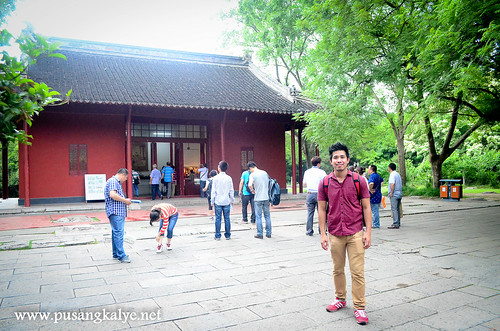
Then there's the sacrificial hall. I was surprised because I was expecting to see something historically significant inside, like sacrificial ceremony tolls perhaps, but there was only a tablet on the wall and shops selling souvenir items. haha!
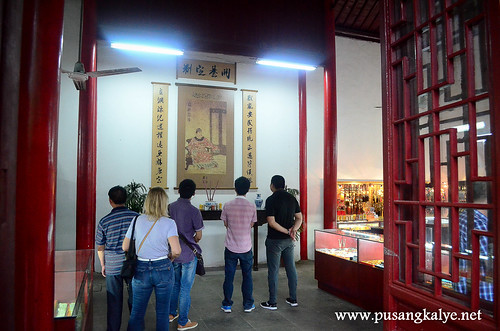
Then there's the long walk again past well cared trees on both sides towards the end where the Soul tower is located.
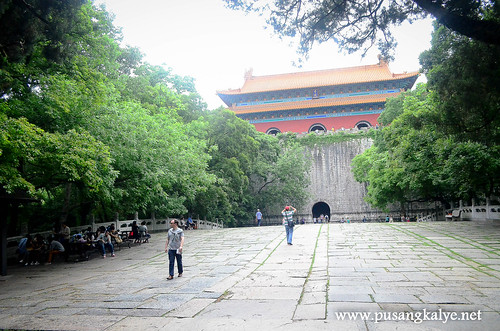
The Soul Tower on top of the Ming Lou
The Ming Xiaoling Mausoleum
The Ming Xiaoling Mausoleum is the tomb of the Hongwu Emperor, the founder of the Ming Dynasty. Legend says that in order to prevent robbery of the tomb, 13 identical processions of funeral troops started from 13 city gates to obscure the real burying site.
The construction of the mausoleum began during the Hongwu Emperor's life in 1381 and ended in 1405, during the reign of his son the Yongle Emperor, with a huge expenditure of resources involving 100,000 labourers. The original wall of the mausoleum was more than 22.5 kilometres long. The mausoleum was built under heavy guard of 5,000 troops. Source
The Soul Tower on top of the Ming Lou
One has to climb up a narrow opening to get to the other side of the tower and walk further up around to get to the uppermost section.
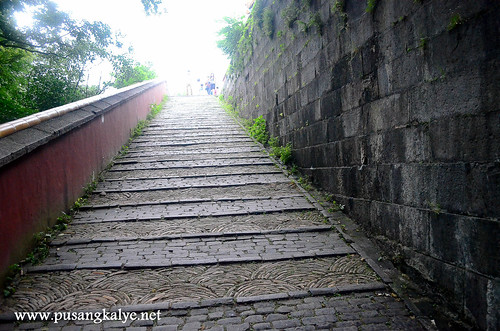
I was also surprised once we got there because other than posters scattered on the walls of the building where you can read the history of the different tombs in the area (and there are so many of them,) just like going around a museum reading historical accounts, the place is dominated by shots selling souvenirs again. At this point I though, "very China Inc." business, business, money, money. It would have been better if the put even copy of relics related to the place. There must be something of cultural significance they can show to give people (especially non-locals who can hardly read Chinese characters) more historical sense of the place.
At any rate, the whole experience was still a walk through a great place.
It started raining a bit after we finished touring Ming Xiaoling Mausoleum so we decided to chill a bit at a coffee shop near the entrance. Enjoyed an expensive mint coffee while seated next to two young Chinese who are apparently university students from Xinjiang. It was also their first time in Nanjing and they also visited Shanghai prior to Nanjing. I mentioned that I like Nanjing far more than Shanghai and they both agreed but they said there is a far more beautiful city nearby, Suzhou, which happens to be in the same province of Jiangsu and is in between Shanghai and Nanjing.
Should I have known about this, we would have dropped by and stayed for a night to check the place. Another reason why we should fly back to China via Shanghai in the future.
Recharged, we decided to take another walk towards Elephant Road which is a spirit way--- an ornate road leading to a Chinese tomb of a major dignitary. The spirit way is lined on both sides by a succession of statues, pillars and stelae. The statues along the spirit way depict real and mythical animals, as well as civilian and military officials.

The stroll here feltt like a walk in some mythical land. But our feet were tired and sore due todays of being on tour so it also felt like eternity reaching the end of the spirit way. For what lies past the Elephand Road we didn't know and the feeling now is that we missed something great for giving up that easy. But what to do. Perhaps next time.
To complete the Zhong Mountain Scenic Area experience in Nanjing, we decided to check the other significant site being Linggu Temple. That will be the subject of my next post.
Please look for it soon. Cheers!
FOR MORE INFORMATION on The Ming Tombs,
Visit: http://www.zschina.org/
More on Najing Soon! ^^
______________________
______________________
YOU MIGHT ALSO WANNA READ:
>>Midnight Train from SHANGHAI-NANJING China and yes, the train officer screamed at.
>>#NANJING: Fuzimiao International Youth Hostel
>>WHAT TO EAT IN NANJING: Steamed Vegetable Ball, Fried Chinese Bolt, Deep Fried Candy Style Dumpling.
>> NANJING MASSACRE WAR MEMORIAL : For the 300,000 who perished
>>FUZIMIAO: Nanjing Confucius Temple Complex
>>NANJING MING CITY WALL and Xuanwu Lake
>>#NANJING: Fuzimiao International Youth Hostel
>>WHAT TO EAT IN NANJING: Steamed Vegetable Ball, Fried Chinese Bolt, Deep Fried Candy Style Dumpling.
>> NANJING MASSACRE WAR MEMORIAL : For the 300,000 who perished
>>FUZIMIAO: Nanjing Confucius Temple Complex
>>NANJING MING CITY WALL and Xuanwu Lake
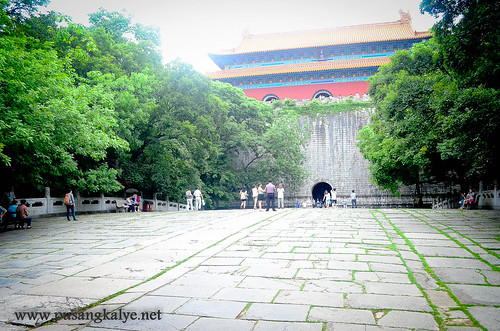
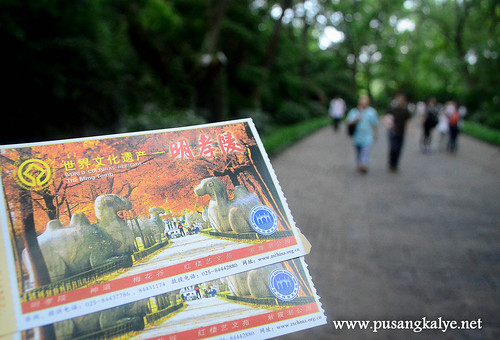
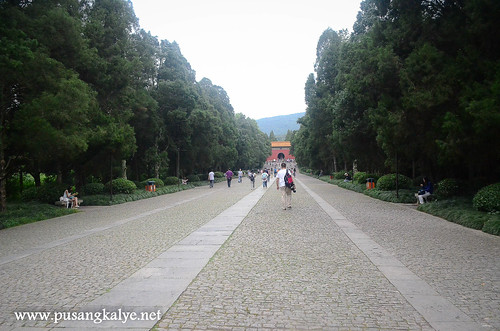
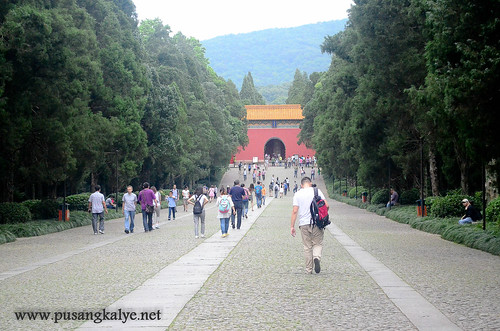
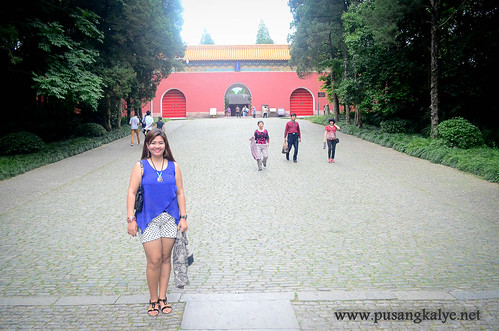
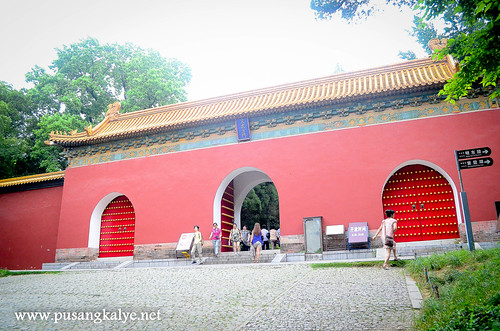

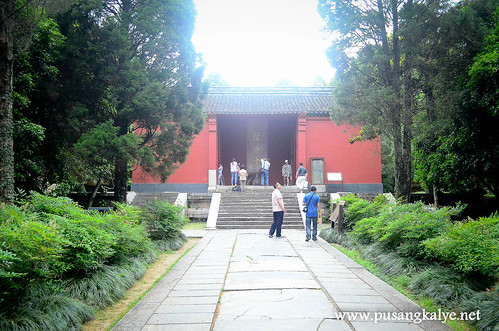
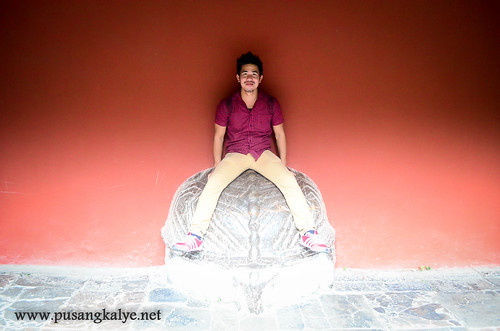
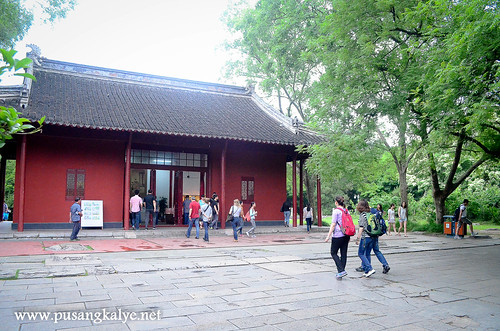
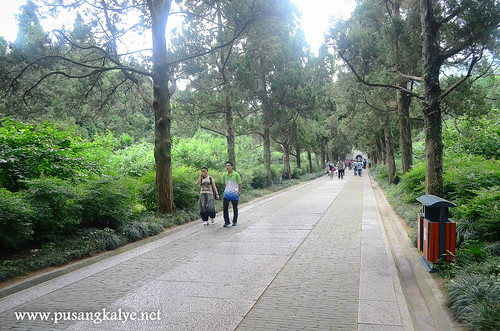
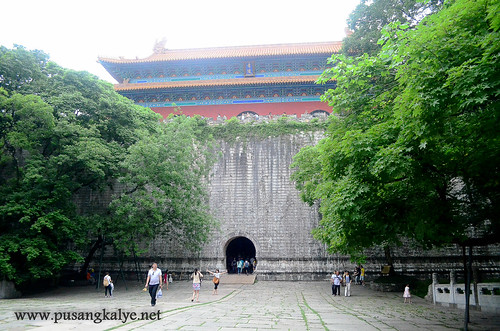
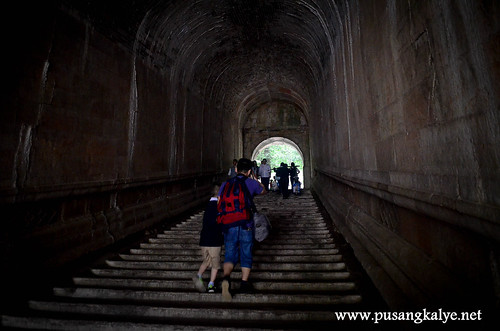
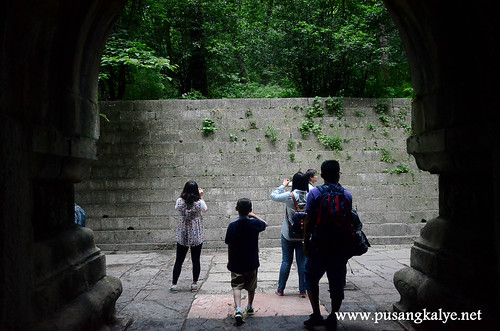
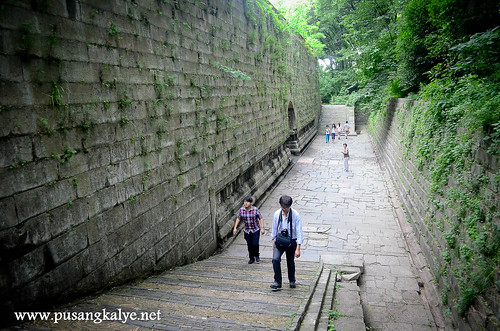
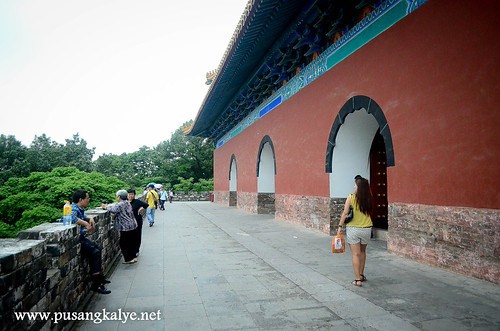

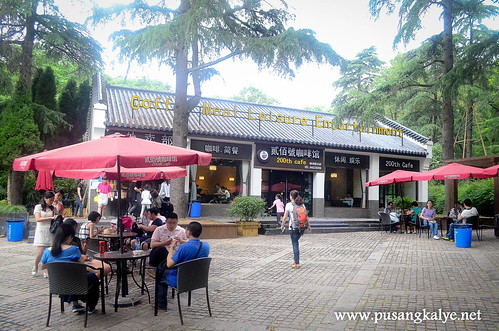


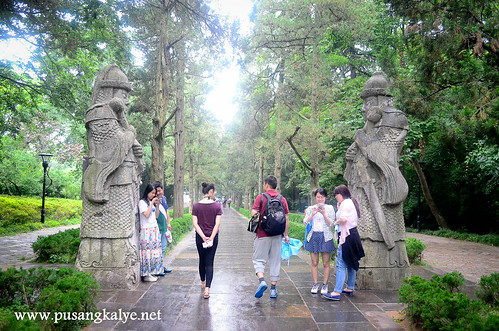
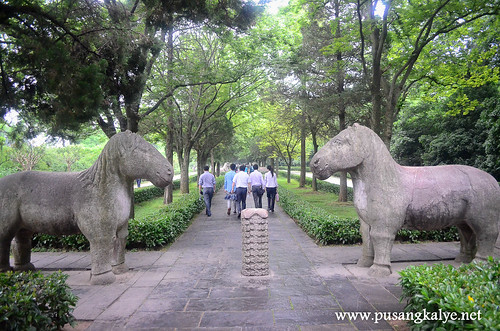
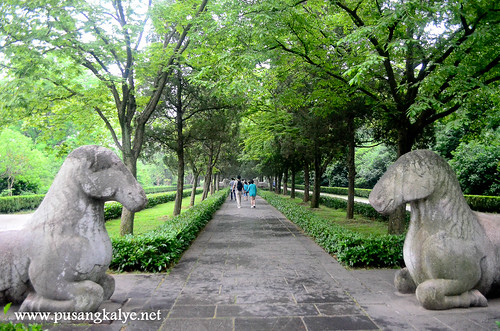
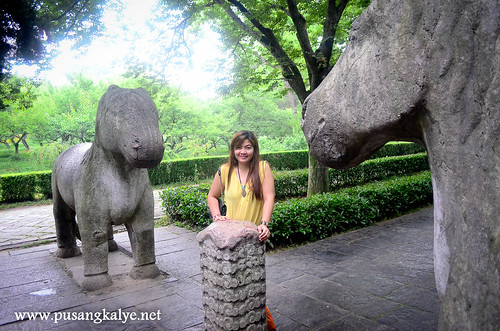
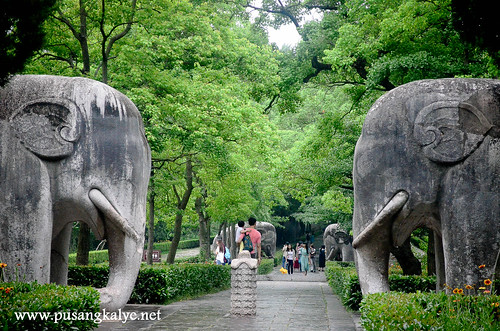
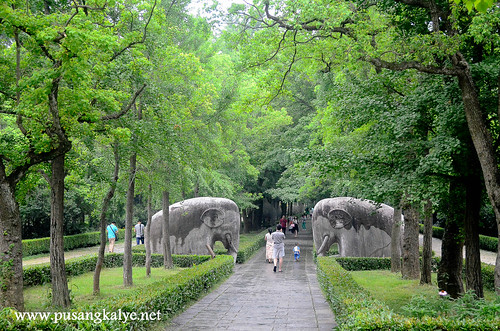
Comments
Post a Comment